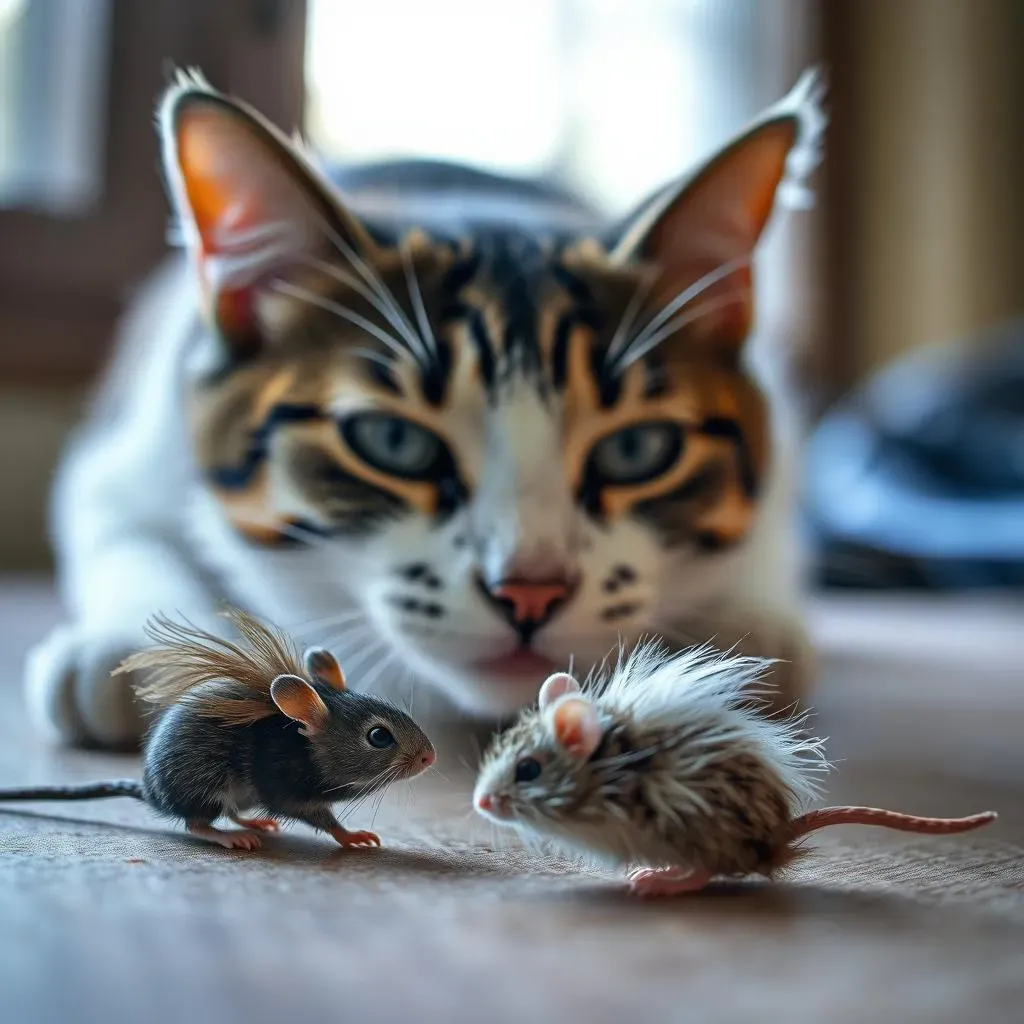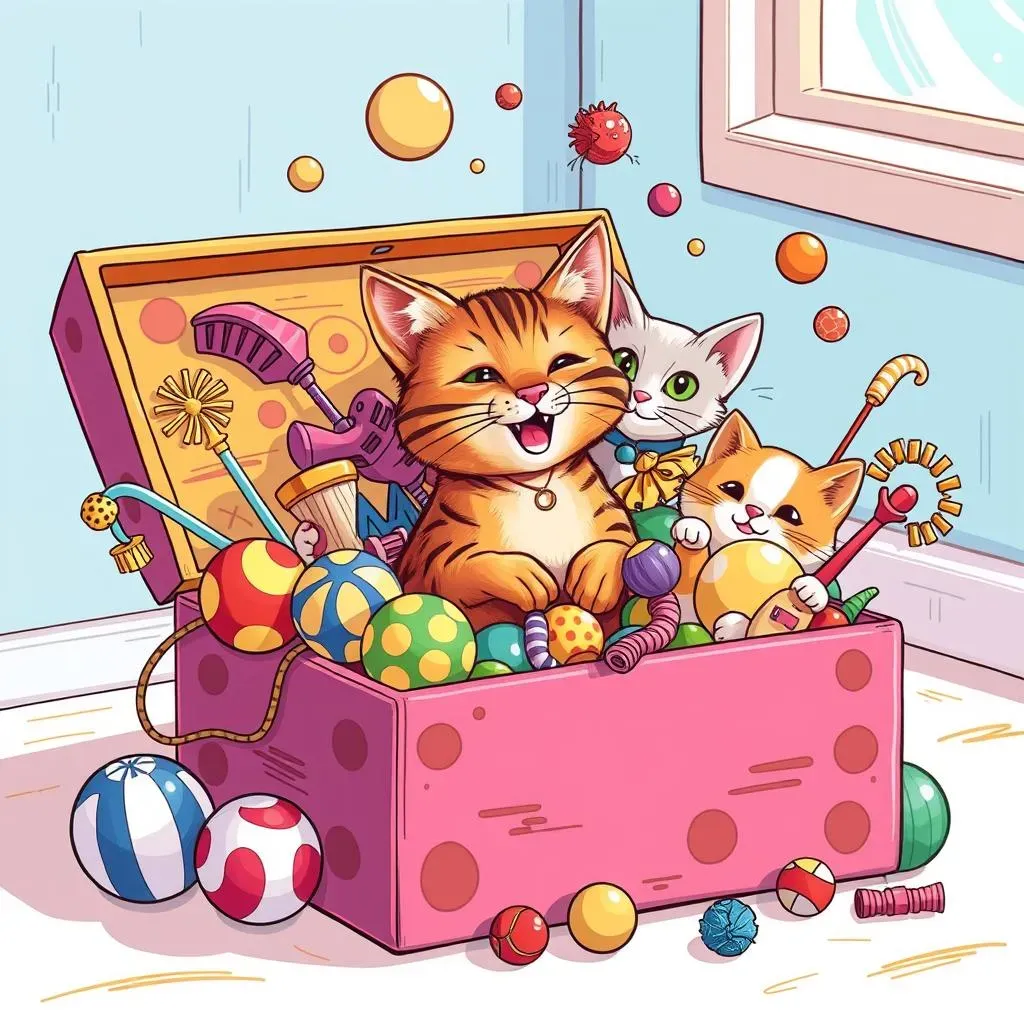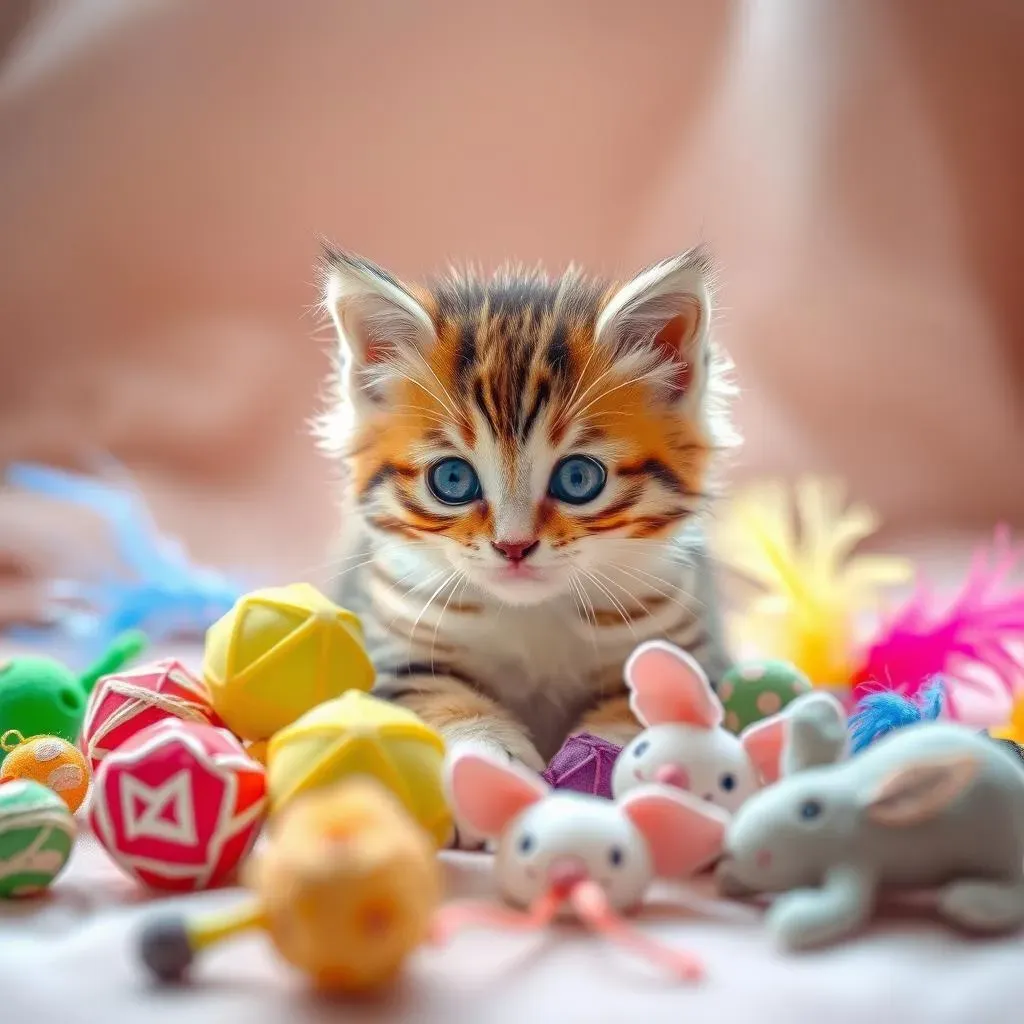Table of Contents
Ever watched your cat stare intently at a dust bunny, then pounce with the ferocity of a lion? It's hilarious, right? But it also highlights a real need: cats are born hunters. That's why figuring out what are good cat toys isn't just about buying something cute; it's about fulfilling their natural instincts for play, exercise, and mental stimulation. We're not just talking about keeping them from shredding your furniture (though, let's be honest, that's a bonus). A good toy can be a game changer, turning a bored kitty into a happy, healthy hunter. This article will walk you through the jungle of cat toy options, from the classic feather wand to brain-bending puzzle toys. We’ll explore what makes a toy irresistible to your feline friend, and how to choose toys that match their unique personality and needs. We’ll also tackle those quirky cat behaviors you might see during playtime. So, grab a catnip mouse and let's get started!
Hunting Instincts: What Makes a Good Cat Toy?

Hunting Instincts: What Makes a Good Cat Toy?
so, you want to know what makes a cat toy truly great? It's not just about the bells and whistles, or in this case, the feathers and crinkle sounds. It's about tapping into something much deeper: their innate hunting instincts. Think about it: your housecat, as cuddly and domesticated as they are, still carries the wild DNA of a predator. They stalk, they pounce, they love that satisfying "catch." So, a good toy needs to trigger those primal urges. It should move in a way that mimics prey—erratic, unpredictable, maybe even a little bit annoying (for you, not them!). It needs to engage their senses, be it through sight, sound, or touch. And, of course, it needs to be safe for them to play with. We're not trying to create a tiny jungle death trap here.
It is not just about mimicking. It's about the whole experience. Think about what a real hunt would be like for a cat. There's the initial stalk, the focused gaze, the sudden burst of speed, and then, the capture. A good toy facilitates this sequence. That's why a wand toy with a feather attached is so popular; it allows you to mimic the movement of a bird or insect, and the cat can experience the thrill of the chase. But what about the "kill"? Well, that's just as important. Letting your cat "catch" the toy at the end of the session is like giving them their hard-earned reward, which is crucial for their satisfaction. It’s a bit like playing a video game and finally beating the boss level, the feeling of triumph is what keeps you coming back, right?
Instinct | Toy Feature | Why It Matters |
|---|---|---|
Stalking | Toys that can be hidden or moved erratically | Engages focus and patience |
Chasing | Wands, balls, or anything that moves quickly | Provides physical exercise |
Pouncing | Toys that can be "caught" and held | Satisfies the hunting sequence |
Sensory Stimulation | Crinkly, feathery, or catnip-filled toys | Engages different senses |
Types of Cat Toys: From Wand Teasers to Brain Games

Types of Cat Toys: From Wand Teasers to Brain Games
The Classics: Wand Teasers and Beyond
so we've covered why cats love to hunt, but now let's look at the tools of the trade. Think of wand toys like the ultimate cat fishing rod; they're super versatile, allowing you to mimic all sorts of prey movements. The feather at the end is like a tiny, irresistible bird to your cat. Then you have the classic toy mice, which are great for batting around and carrying in their mouths, just like they would a real mouse. And don't forget the crinkle balls! The sound they make can drive cats wild, and it's a great way to get them moving. These are the bread and butter of cat toys, and for a good reason: they work. But there is more to cat toys than just the classics.
These toys are the workhorses of the cat toy world, but they're not the only option. Some cats are all about the chase, while others prefer to strategize. That’s why it's important to have a variety of toys on hand. If I had a dollar for every time my cat got bored of the same old mouse, I'd be a millionaire. It's all about keeping things fresh and exciting. Plus, different textures and materials can make a difference too. Some cats love soft plush toys, while others prefer the feel of rougher materials like sisal or cardboard.
The Thinkers: Brain Games and Interactive Toys
Now, let's move on to the brainy bunch. We're talking about puzzle toys and interactive feeders. These are not just about physical exercise; they challenge your cat mentally. Think of them as tiny obstacle courses for their minds. These toys usually involve some sort of problem-solving element, like figuring out how to get a treat out of a hidden compartment. It might seem simple to us, but for a cat, it’s a stimulating challenge. This is especially good for indoor cats who might not get as much mental stimulation as outdoor cats.
Interactive toys are fantastic because they keep your cat entertained even when you're not around. They can bat at a toy that moves on its own, or try to "hunt" a laser dot. Just make sure the laser is pointed away from their eyes. These toys can help prevent boredom and can be a great way to keep them from getting into trouble. Plus, watching them try to figure out the puzzles is honestly hilarious. It’s like watching a tiny furry scientist at work. Who knew cats could be so clever?
Toy Type | Description | Benefits |
|---|---|---|
Wand Toys | Feathers, ribbons, or toys on a string | Mimics prey, great for interactive play and exercise |
Mice and Balls | Small, easily batted toys | Encourages chasing and pouncing |
Crinkle Toys | Toys with a crinkly sound | Stimulates senses, encourages play |
Puzzle Toys | Toys that hide treats or require problem-solving | Provides mental stimulation and prevents boredom |
Interactive Feeders | Toys that dispense food as the cat plays | Encourages exercise, slows down eating |
Catering to Your Cat's Needs: Age, Preferences, and Play Styles

Catering to Your Cat's Needs: Age, Preferences, and Play Styles
Kittens vs. Seniors: Different Stages, Different Toys
Alright, so you've got a handle on the basics, but it's not one-size-fits-all when it comes to cat toys. A tiny, fluffy kitten is going to have different needs than a wise, old senior cat. Kittens are basically tiny balls of energy, bouncing off the walls and trying to eat everything in sight. They need toys that are lightweight, easy to bat around, and safe for chewing (because, let's face it, everything is a chew toy to a kitten). Think small, soft toys, like those little fabric mice or crinkle balls. But avoid anything with small parts they could swallow.
Now, on the other end of the spectrum, you have your senior cats. They might not be up for the same high-energy play as a kitten, but they still need mental and physical stimulation. Opt for toys that are gentle and easy to interact with. Things like soft plush toys, slow-moving laser pointers (always point away from their eyes!), or puzzle toys that aren’t too challenging. The goal here is to keep them engaged without overdoing it. A little bit of play can go a long way in keeping them happy and healthy. It's all about adjusting to their changing energy levels and capabilities.
Decoding Your Cat's Unique Toy Personality
so you know about age, but what about personality? Just like us, cats have their own unique preferences. Some are natural-born hunters, always on the prowl for the next "kill," while others are more into the chill, relaxed vibe. If your cat is always stalking and pouncing, they might love those wand toys or anything that mimics prey. If they're more laid-back, they might prefer a puzzle toy or a soft, cuddly toy to snuggle with. Watch how your cat interacts with different toys and pay attention to what gets them excited. It's all about being a cat detective and figuring out what makes them tick. It’s like trying to find the perfect gift for a friend; you have to think about what they would actually like, not just what you think is cool.
Don’t be afraid to experiment. Try different types of toys, textures, and even scents. Some cats go wild for catnip, while others are more interested in silvervine. And remember, what one cat loves, another might completely ignore. I had two cats once, one of them loved anything that moved, while the other preferred to cuddle with a soft toy. It’s all about finding what works best for your feline friend. It's a journey of discovery, and it's part of the fun of being a cat parent. The main thing is to provide variety and keep things interesting. After all, a bored cat is a mischievous cat.
Cat Stage | Toy Recommendations | Why? |
|---|---|---|
Kittens | Lightweight, soft toys, crinkle balls | Safe for chewing, easy to bat around |
Adult Cats | Variety of toys, wand toys, puzzle toys | Keeps them engaged and prevents boredom |
Senior Cats | Gentle toys, soft plush toys, slow-moving lasers | Easy to interact with, avoids overexertion |
The Art of Playtime: How to Engage Your Cat
So, you've got all the right toys, but how do you actually get your cat to play? It's not enough to just toss a toy at them and hope for the best. You need to be an active participant in the play session. Short, frequent play sessions are better than long, infrequent ones. Think of it like a quick workout; a few minutes of intense activity can be more effective than a long, drawn-out one. Try to schedule playtime when your cat is most active, which is often in the morning or evening. And don't forget to let them "catch" the toy at the end of the session. It's like giving them a reward for their hard work.
Introducing new toys regularly can also keep things fresh and exciting. Cats get bored easily, so having a rotation of toys can prevent them from losing interest. And don't be afraid to demonstrate how to play with a toy. Sometimes cats need a little guidance to understand what they're supposed to do. Get down on the floor with them, wiggle that wand toy, and let them see how fun it can be. The most important thing is to make it a positive experience for both of you. Playtime should be a bonding experience, a time to laugh and connect with your feline friend. Because, let’s be real, watching your cat go bonkers over a feather toy is just pure entertainment.
Wrapping Up: The Purrfect Toy Quest
Finding the right toys for your cat might feel like a never-ending quest, but it's a journey well worth taking. Remember, what works for one cat might not work for another. It's all about understanding your cat's unique personality, their play style, and their hunting instincts. Don't be afraid to experiment with different types of toys, and don't get discouraged if your cat turns their nose up at something you thought was a sure winner. Sometimes the best toy is a crumpled piece of paper, and that's perfectly okay. The key is to engage with your cat, to provide them with opportunities to play, and to strengthen that bond you share. Happy playing!